Search Results
Fine Jewelry University Articles matching: “Equestrian-earrings”
Showing only FJU Article results. Click here to show all results.
Fine Jewelry University (Show All FJU Articles)
-

Styles of Earring Backs
There are many styles of earring backs, and finding the right one for you can be overwhelming. In this article, we have laid out the various styles in a straightforward pros and cons format. If you have a style in mind, but aren't sure what it's called, or if you are having trouble with your current earring backs and are looking for good alternatives, we encourage you to continue reading.
-

Gem in the Spotlight: Morganite
Morganite is a beautiful, soft pink gemstone and a graceful expression of elegance. It is not a very well-known gem, but it definitely should be. It is pastel or pale in color by nature and known for its transparent peach-pink hue though it also occurs as soft pink, violet-pink, or pale salmon. It is the subtle, understated nature of Morganite’s color that sets it apart from many of the more popular gemstones. Morganite has an impressive family tree. It is a beryl gem which puts it in the same family
-

Gem in the Spotlight: Alexandrite
Emerald by day, ruby by night, more expensive than diamond and more illustrious than sapphire, emerald, or even ruby, alexandrite has been known around the world as one of the most sought-after gems for the better part of 200 years. But, what makes this stone so special? Gemology of Alexandrite Alexandrite is the extremely rare, color-change variety of a gem species called Chrysoberyl. It appears bluish-green in daylight, fluorescent light, and some LED light. Under incandescent light, candle, and firelight, alexandrite appears purplish-red. This is because of how the trace
-
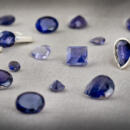
Gem in the Spotlight: Iolite
Iolite is maybe not the first gemstone people think of for their blue-violet jewelry, but it should be near the top of the list. Iolite’s color range of blue, blue-violet, and violet competes for public attention with sapphire, tanzanite, and amethyst. They may have name recognition, but iolite has a rich, unique color and great gem value on its side. It is more subtlety nuanced than amethyst and deeper than many tanzanites. Iolite’s name comes from its violet color. It is from the Greek word “ios” meaning violet. Unlike many
-
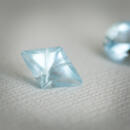
Gem in the Spotlight: Aquamarine
Aquamarine derives its name from the Latin which literally means “seawater,” a tribute to its beautiful blue color. As a member of the beryl family, Aquamarine has some illustrious cousins in addition to a rich history of its own. The Mythology of Aquamarine Long associated with tranquility and happiness, aquamarine was also thought to instill courage, cure laziness, and sharpen the intellect. The ancient Greeks used aquamarine often in jewelry believing it captured the true spirit of the sea. Best known for its beautiful blue color, aquamarine was used to
-
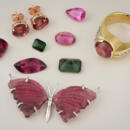
Gem in the Spotlight: Tourmaline
Tourmaline is a beautiful gem that comes in a huge variety of colors (sometimes even within the same stone). This article teaches you all about the history, folklore, and gemology of tourmaline including varieties like rubellite, indicolite, paraíba, and more. You'll also learn about California tourmaline and the unique piezoelectric property that has made tourmaline as useful as it is beautiful.
-
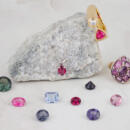
Gem in the Spotlight: Spinel
Spinel may be one of the most underappreciated gemstones in all of history. For centuries it has been confused with more popular gems like ruby and sapphire, and only recently have people begun to appreciate spinel for its own natural beauty. Commonly made in a lab spinel has been used a lower cost substitute for other gems, but natural spinel is actually a stunning gem in its own right. This in-depth article covers the gemology, history, and lore of this amazing and often overlooked gem.
-
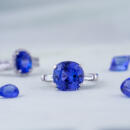
Gem in the Spotlight: Tanzanite
Beauty and rarity are two wonderful traits in a gemstone. Tanzanite has them both. In fact, it is estimated that Tanzanite is 1,000 times rarer than diamond. But, what makes Tanzanite so popular is its color. Tanzanite’s gorgeous color is a captivating mix of blue and purple. The deep hues of violet, indigo, and blue come together in an unrivaled blend only found in tanzanite. Yet, even with its rarity and dynamic look, tanzanite is still less in price than more commonly known gems like rubies, sapphires, and emeralds. Gemology
-
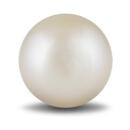
Gem in the Spotlight: Pearl
Pearls have been sought after and loved by people for hundreds of years of human history. In this in-depth article, we explore the science, history, and gemology of this incredible product of nature. Learn about famous pearls like La Peregrina, the seven value factors of pearls, the difference between saltwater and freshwater pearls, and much more.